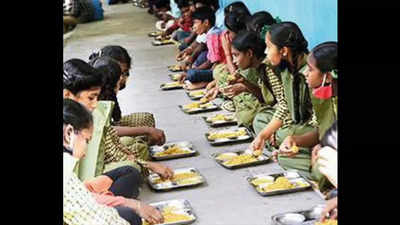Top Searches
- News
- City News
- bengaluru News
- Karnataka: Mudde, jowar roti in midday meal menu?
Karnataka: Mudde, jowar roti in midday meal menu?

Mudde and roti are expected to replace the carbohydrates in the midday meals when they are introduced.
BENGALURU: The Karnataka education department has proposed ragi mudde and jowar roti for schoolchildren in their midday meals in areas where they are part of the culture. With this, many districts in south Karnataka may receive ragi mudde, and north Karnataka jowar roti.
Currently, rice and sambar are the staple food provided in the midday meals, as it is bound to cover cereals as well as protein.
Mudde and roti are expected to replace the carbohydrates in the midday meals when they are introduced. Sambar will be served along with these meals. The proposal is awaiting approval from the Centre.
Vishal R, commissioner, department of public instruction, said: "The Karnataka food and civil supplies corporation had informed us that they have jowar supply until September and ragi until January. We received them at competitive rates. It is a win-win situation for all. There is no compulsion on using mudde or roti. It is up to the schools. It is a local cuisine and children would love to have the comfort food. There will be no shortage of rice available to the schools."
While nutritionists say that the additions will be good in terms of bringing in a variety in the meals and playing to the culture and taste of children, it might not be a great value addition in terms of nutrition.
"They come under the food group of cereals and millets, just like rice. One is not superior to the other. If there is a notion that introducing these can address malnutrition, then it is wrong. What is important is the other ingredients with it. How thick is the sambar, what are the vegetables, how much oil is added and so on. Many times, we find the midday meals are rich in cereals and the sambar watery," said Dr Sylvia Karpagam, a public-health researcher.
"There is an understanding that ragi is rich in iron and calcium. Very often, not all of it is absorbable by the body. It makes the person feel full very fast. While it is good that the children feel full, they might not get the nutrition they get through eggs, milk or curd," she added.
FOLLOW US ON SOCIAL MEDIA
FacebookTwitterInstagramKOO APPYOUTUBE
Start a Conversation
end of article










